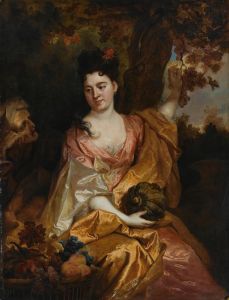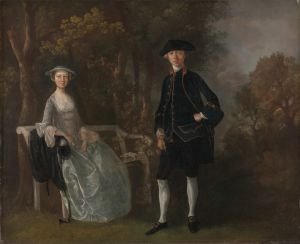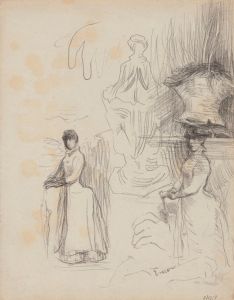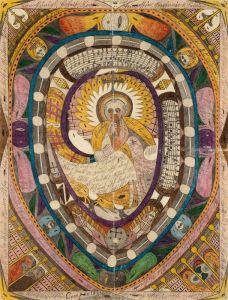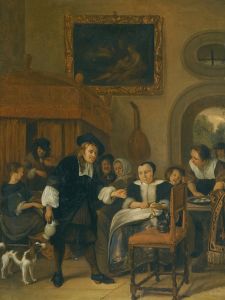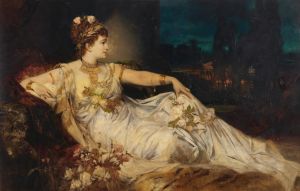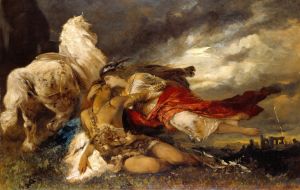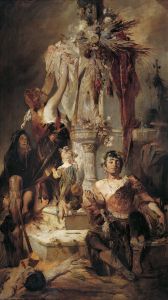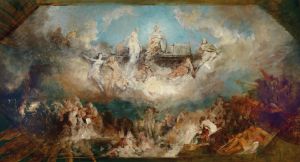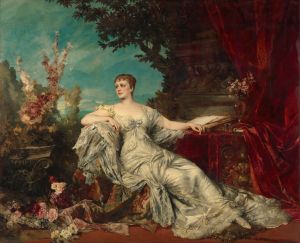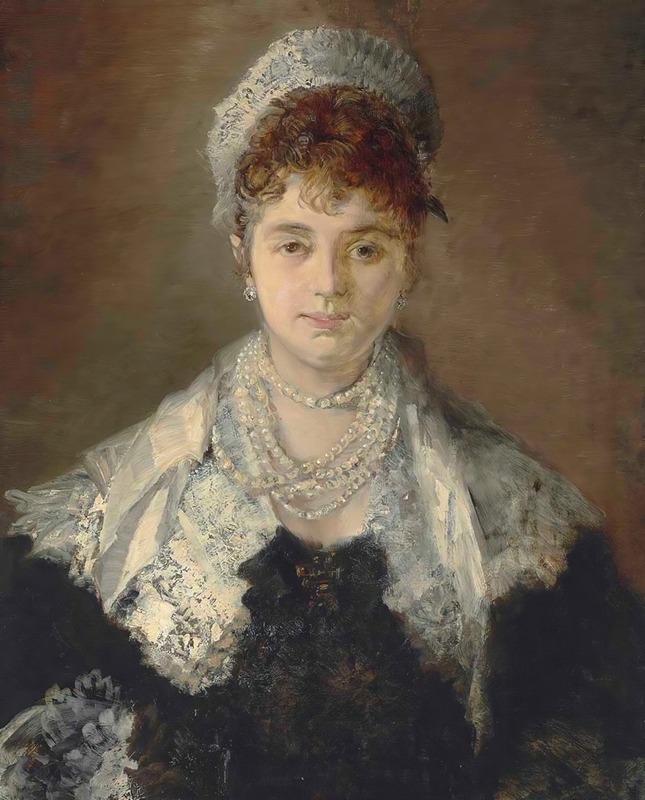
Portrait Of A Lady, Possibly Johanna Elisabeth Maria Von Klinkosch, Princess Aloys Of Liechtenstein
A hand-painted replica of Hans Makart’s masterpiece Portrait Of A Lady, Possibly Johanna Elisabeth Maria Von Klinkosch, Princess Aloys Of Liechtenstein, meticulously crafted by professional artists to capture the true essence of the original. Each piece is created with museum-quality canvas and rare mineral pigments, carefully painted by experienced artists with delicate brushstrokes and rich, layered colors to perfectly recreate the texture of the original artwork. Unlike machine-printed reproductions, this hand-painted version brings the painting to life, infused with the artist’s emotions and skill in every stroke. Whether for personal collection or home decoration, it instantly elevates the artistic atmosphere of any space.
Hans Makart was an Austrian painter known for his influence on the Viennese art scene in the late 19th century. His works are characterized by their opulent style and vibrant use of color, often depicting historical and allegorical subjects. One of his notable works is "Portrait of a Lady, Possibly Johanna Elisabeth Maria Von Klinkosch, Princess Aloys Of Liechtenstein."
This painting is a fine example of Makart's portraiture, showcasing his ability to capture the elegance and sophistication of his subjects. The identity of the lady in the portrait is not definitively confirmed, but she is possibly Johanna Elisabeth Maria Von Klinkosch, who was associated with the Liechtenstein family through marriage. The Liechtenstein family is one of the oldest noble families in Europe, with a rich history and significant influence in the region.
Makart's portraits often reflect the grandeur and opulence of the Austro-Hungarian Empire during his time. His subjects were typically members of the aristocracy or prominent figures in society, and he was known for his ability to depict them with a sense of majesty and grace. The painting in question likely follows this tradition, presenting the lady in a manner that emphasizes her status and elegance.
The composition of the portrait is typical of Makart's style, with a focus on rich textures and intricate details. The use of color is particularly noteworthy, as Makart was known for his bold and dynamic palette. This approach not only highlights the beauty of the subject but also adds a sense of vitality and movement to the painting.
Makart's influence extended beyond his paintings; he was a central figure in the cultural life of Vienna and played a significant role in shaping the aesthetic tastes of the time. His works were celebrated for their theatricality and grandeur, and he was often compared to the great masters of the Baroque period. Despite his popularity, Makart's style was sometimes criticized for its emphasis on decoration over substance, but his impact on the art world remains undeniable.
The painting "Portrait of a Lady, Possibly Johanna Elisabeth Maria Von Klinkosch, Princess Aloys Of Liechtenstein" is a testament to Makart's skill as a portrait artist and his ability to capture the essence of his subjects. While specific details about the lady's identity and her life may not be fully documented, the painting itself serves as a historical artifact, reflecting the cultural and social milieu of the time.
In summary, Hans Makart's "Portrait of a Lady, Possibly Johanna Elisabeth Maria Von Klinkosch, Princess Aloys Of Liechtenstein" exemplifies the artist's mastery of portraiture and his contribution to the art world of 19th-century Vienna. The painting remains a significant piece within Makart's oeuvre, illustrating his distinctive style and the opulent world of the Austro-Hungarian aristocracy.






